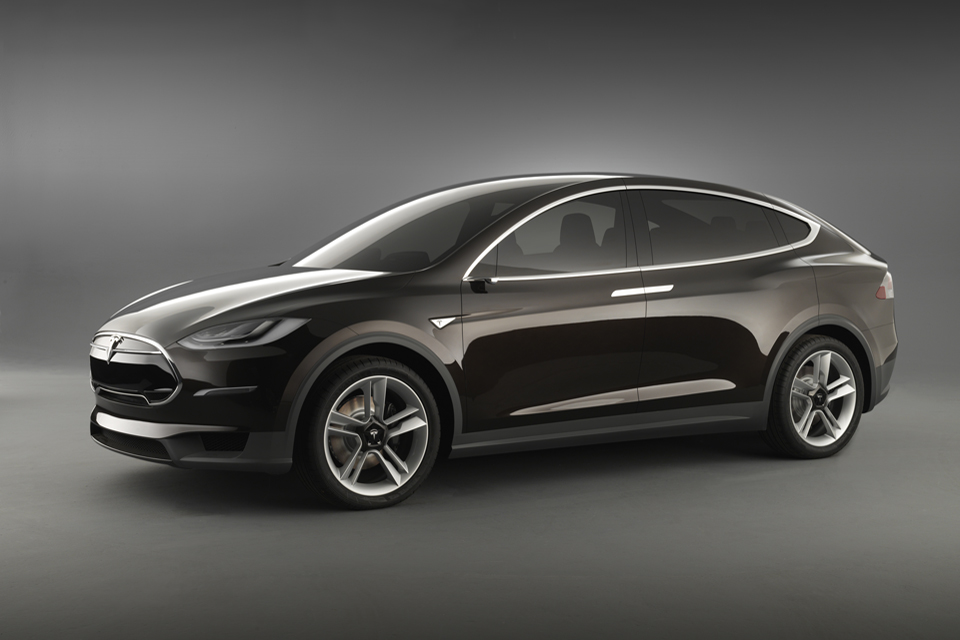Less than twenty-four hours ago, Tesla Motors unveiled its enigmatic 2014 Model X Crossover SUV to the world, becoming the first automaker to promise a crossover utility with doors you’d normally find on a sports car.
But while its ostentatious falcon doors might gain it some design kudos, it could also give Tesla some extra headaches when bringing it to market.
No Roof Rack
Look at almost any SUV on the market today, and the chance are you can buy an array of roof-mounted luggage racks, from the humble roof box through to fully automated bicycle carriers.
But with doors that hinge upwards, roof racks become an impossibility.
And while we admit that as with any car, a roof rack would severely affect the Model X’s aerodynamic drag and thus the range it could give on a full charge, we feel most SUV buyers expect to be able to carry luggage on the roof if they need to.

Tesla Model X
Of course, we have to acknowledge that the lack of roof rack capability isn’t necessarily a bad thing altogether.
Without the ability to carry luggage on a roof rack, Tesla engineers know that the Model X will be able to retain its low center of gravity, regardless of how it is used. And that means predictable, exceptional handling.
Rollovers
Like any car sold in the U.S. will have to prove itself in tough crash tests, which will include rollover safety tests.
But with falcon doors and an almost all-glass roof, the 2014 Model X may encounter some additional engineering challenges.
Firstly comes roof strength. Rather than transmit loads through a series of steel or aluminum reinforcements as most solid car roofs do, the Model X will have to transmit impact and load forces through the glass itself, as well as through the heavy falcon doors.

Tesla Model X
Secondly, while traditional car doors will open even if the car is on its roof, falcon-winged doors will not be able to open fully if the car is resting on its roof, hindering recuse attempts in the event of a crash.
In order to overcome this, we’d expect Tesla engineers to have built some form of safety detachment system into the Model X’s falcon door hinges.
In the same way that an airbag is activated in the event of a crash, we’d expect a sensor to trigger a detonation system that could detach the doors from the car in the case of a rollover.
Extra Complexity = Extra Cost
In adding falcon wing doors, Tesla has solved a problem that many car buyers didn’t even think they had, namely poor second- and third-row seat access.
At the same time however, Tesla has turned the door from a simple hinge into an extremely complicated, fully-automated, articulated machine.
That, as well as the all-glass roof, will no-doubt increase production costs dramatically, resulting in a hefty sticker price.
What Do You Think?
We love the Tesla Model X’s sweeping lines, spacious interior and impressive performance specs, but we can’t help but wonder if its mix of regular front and falcon rear doors make for a car that’s just too quirky for the regular SUV buyer.
But what do you think? Has Tesla made things hard for itself in the pursuit of design excellence, or are the falcon wings the pinnacle of practicality?
Let us know in the Comments below.
+++++++++++












